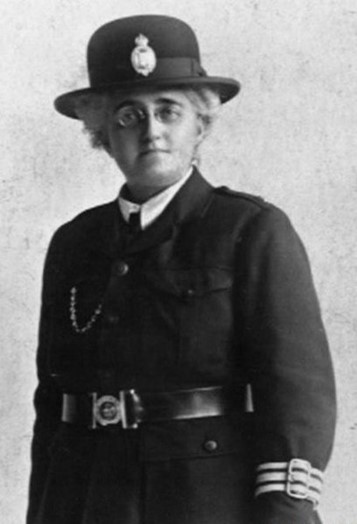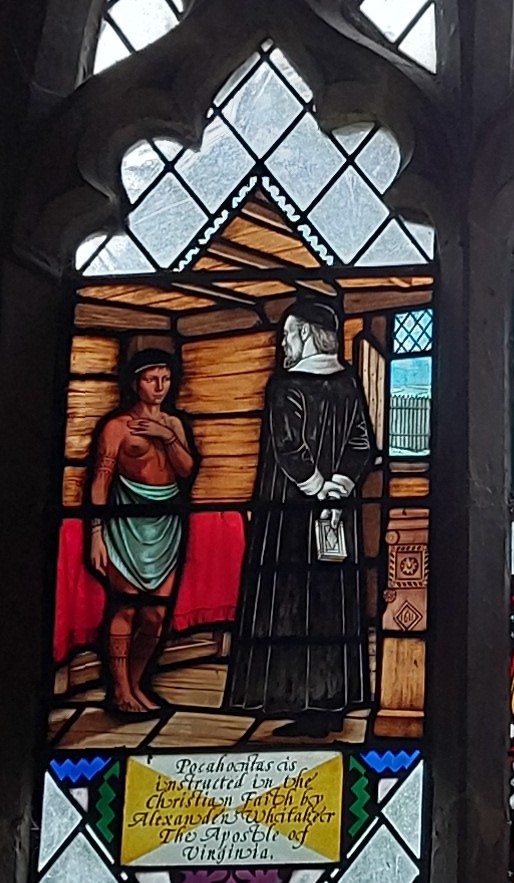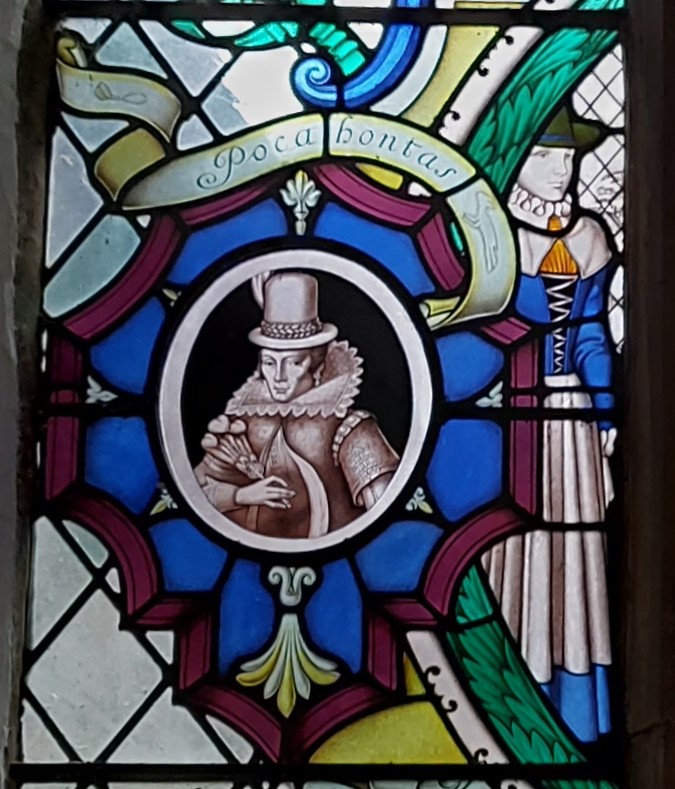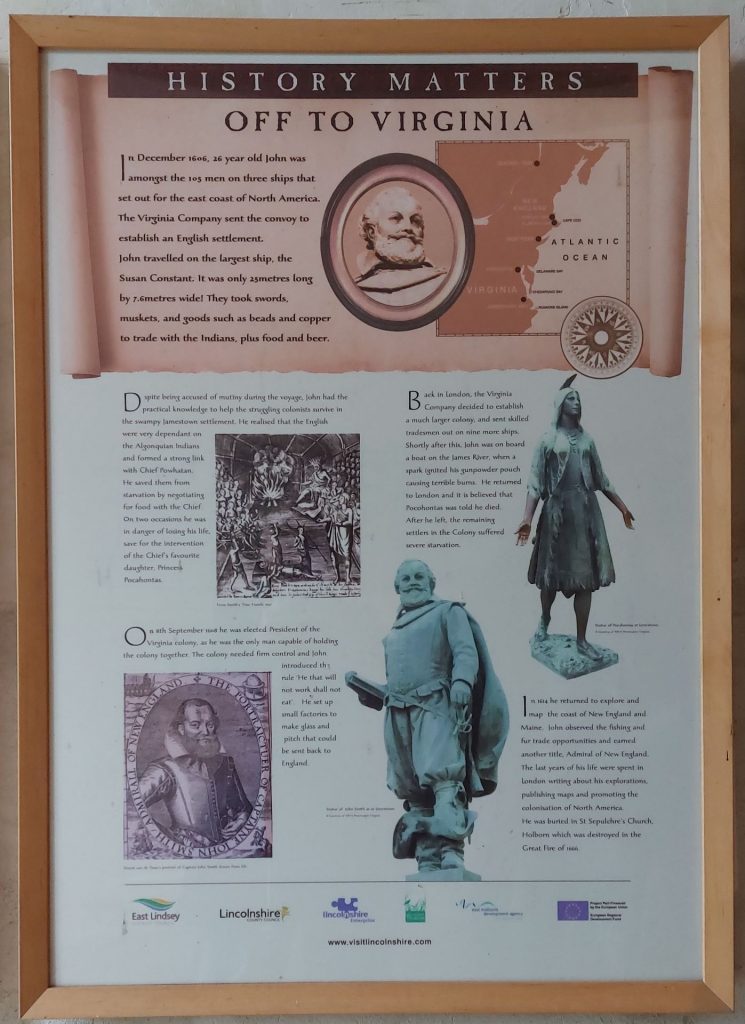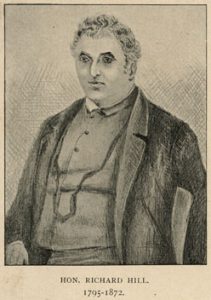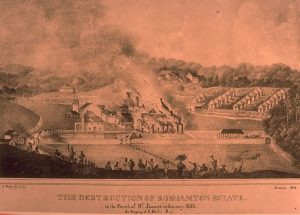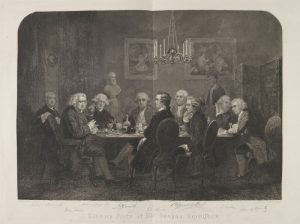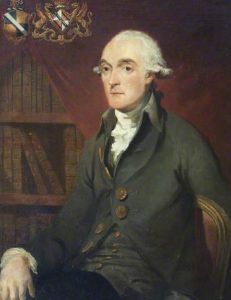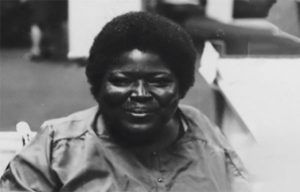1 October is Lincolnshire Day. As with so many other invented traditions, it is a recent addition to the commemorative calendar (first celebrated in 2006) but has deep historical roots. It recalls the Lincolnshire Rising, which began in early October 1536. A county movement in the geographically wider Pilgrimage of Grace, it was the most significant Catholic revolt that Henry VIII’s breakaway Church of England faced.
We mark the day this year by celebrating cultural diversity. Reimagining Lincolnshire Research Fellow Rob Waddington has compiled this list as a tribute to the region’s contribution to pop music over the past sixty years. Enjoy!
1. The Allisons: Are You Sure? (1961; highest chart position no.2)
The Allisons were a duo who came second in the Eurovision Song Contest and reached number 2 in the UK charts with Are You Sure? Although the single did not hit the top of the charts, it sold well. In fact, according to the OCC (Official Charts UK), it was the 39th best-selling single of the 1960s, outselling 11 of the 21 Beatles’ singles released in that decade and all bar one of The Rolling Stones’ singles. The song, influenced by The Everly Brothers and Buddy Holly, was co-written by the two Allisons, Bernard ‘Bob’ Day and John Alford. Until recently, John Alford could often be seen cycling near his home in the West End of Lincoln.
2. Joe Brown & The Bruvvers: A Picture Of You (1962; no. 2)
Noted for his chirpy Cockney image, Joe Brown was actually born in Swarby, Lincolnshire on 13 May 1941, but his family moved to London when he was two.
The Beatles’ version of A Picture of You was recorded on 11 June 1962, just a week after they signed a recording contract with EMI. It was broadcast by the BBC four days later, on 15 June 1962; this was pre-stardom for the group. It features George Harrison on vocals. George Harrison and Joe Brown later became close friends: Joe played on some of George’s solo albums and in 2000, George was the best man at Joe’s wedding.
A pre-contract test for EMI in early June had sealed the fate of Ringo Starr’s predecessor, Pete Best (born in Chennia, India). George Martin was not impressed with him and the other three Beatles, along with Brian Epstein, planned his exit. At this time, Ringo was with Rory Storm & The Hurricanes in Ingoldmells. They had a twelve-week contract to play the summer season at Butlin’s Skegness. In mid-August, with a couple of weeks still left on their contract, Ringo was invited to join The Beatles. There are various stories about how this happened: some say that John Lennon phoned Ringo, some that Brian Epstein phoned Ringo. Eyewitnesses such as Johnny Guitar, who shared accommodation at Ingoldmells with Ringo, say that John Lennon and Paul McCartney actually visited Ringo there. Whatever the case, Pete was out and Ringo was in. He broke his contract at Butlin’s and first performed as a member of The Beatles at a Horticultural Society dance on 18 August.
3. The Groundhogs: Shake It (1965)
Tony McPhee, born in Humberston on 22 March 1944, was a founder member of The Groundhogs and is still in the group. He formed the group with Pete and John Cruikshank, who, like Pete Best, were born in India. McPhee pushed the band towards the Blues and they worked as John Lee Hooker’s backing band in 1964. Shake It was their first single, but it would be another five years before they would have commercial success with a series of top ten albums.
4. The Ivy League: Funny How Love Can Be (1965; no.8)
The Ivy League were a trio including Perry Ford (stage name of Brian Pugh, born in Lincoln 30
December 1933 and died in Lincoln 29 April 1999). This was their first hit and was followed by Tossing and Turning. The Ivy League also worked as session musicians. Perry Ford’s credits include playing keyboards on The Kinks’ All Day And All Of The Night and singing backing vocals on The Who’s debut I Can’t Explain. Moreover, Perry Ford wrote songs for Adam Faith, The Shadows, The Hollies and Lulu. His song Caroline, recorded by The Fortunes, was the theme tune for pirate radio station Radio Caroline.
Funny How Love Can Be is surely an influence on The La’s 1988 Indie classic “There She Goes”
5. The Casuals: Jesamine (1968; no. 2)
The Casuals were a Lincoln group led by Johnny Tebb (b. 1 October 1945, d. May 2018), who was raised on Outer Circle Road, and Howard Newcombe (b. 25 November 1945).
The Casuals were three-time winners of the TV talent show Opportunity Knocks in 1965, but commercial success was not immediate in the UK. They moved to Italy, where they recorded Italian versions of contemporary hits including an Italian No.1 with their version of the Bee Gees’ Massachusetts. Success in the UK finally came in 1968, when Jesamine reached No. 2. However, only one more minor hit followed.
Jesamine was co-written by Marty Wilde, under a pseudonym. Wilde had been one of Larry Parnes’ stable of rockers. Parnes came into rock and roll management with Tommy Hicks, better known as Tommy Steele. It was Parnes who renamed Reginald Smith as Marty Wilde and Ronald Wycherley as Billy Fury. Parnes also had Roy Taylor from Grantham on his books. Unfortunately, Taylor was towards the back of the line when it came to Parnes dispensing pseudonyms. Steele, Wilde, Fury – what aggressive, macho name did Parnes bestow on Roy Taylor? Vince Eager. Despite regular appearances on a BBC TV rock’n’roll show, Eager never had a hit. Joe Brown (see no 2 above) was also managed by Parnes, but had the sense to reject Parnes’ suggested pseudonym, Elmer Twitch.
6. The Bonzo Dog Doo-Dah Band: I’m The Urban Spaceman (1968; no. 5)
The Bonzo Dog Doo-Dah Band were a link between The Beatles and Monty Python. They appeared in The Beatles’ Magical Mystery Tour TV film and Paul McCartney produced their hit single I’m The Urban Spaceman, under a pseudonym. The Bonzos were a satirical band lead by the comic genius of their songwriters Neil Innes and Vivian Stanshall. The Bonzos were the resident band on the children’s TV show (mostly watched by adults), Do Not Adjust Your Set, a precursor to Monty Python and featuring three future Pythons. Other than Stanshall and Innes, the only constant member of the band was saxophonist Rodney Slater, who was born in Crowland on 8 November 1941.
7. Forest: Graveyard (1970)
A folk trio, originally called The Foresters of Walesby, was formed in 1966 by Adrian and Martin Welham (raised in Grimsby) and Dez Allenby. All three went to school in Winteringham. They signed to the Harvest record label and shortened their name to Forest.
Despite the support of John Peel on BBC Radio 1, their two albums were not commercially successful. However, Forest’s brand of folk psychedelia on these records has grown in reputation in recent years as part of the Acid Folk genre. Their second album Full Circle was listed in The Guardian’s ‘1000 Albums You Must Hear Before You Die’. The album cover is a psychedelic painting of the church at Walesby.
8. Matthews Southern Comfort: Woodstock (1970; no. 1)
Iain Matthews was born in Barton on Humber on 16 June 1946. His family moved to Scunthorpe
when he was twelve. He was a member of Fairport Convention, with whom he recorded three classic albums. He left Fairport when they changed their musical style from one influenced by American singer-songwriters to traditional British folk music. Fairport recorded two Joni Mitchell songs for their first album and it was a Joni Mitchell song, Woodstock, that would provide his new band, Matthews Southern Comfort, with a number one hit single.
9. T-Rex: Get It On (1971; no.1)
Steve Currie was the bass player with Glam Rock greats T-Rex from December 1970 to August 1976, the band’s halcyon period. He was born in Grimsby on 19 May 1947. Before he joined T-Rex, he played with the Grimsby group The Rumble Band, who released one single as Rumble. He played on eleven Top Twenty singles with T-Rex, including four number ones. After leaving T-Rex, he worked as a session musician. He died in a car crash in the Algarve on 28 April 1981.
T-Rex’s main man, Marc Bolan, had been killed in a car crash in 1977. There is a shrine on the site of the crash. A memorial plaque to Steve Currie has been mounted on this shrine.
10. Elton John: Grimsby (1974)
As most of Elton John’s hit singles are still so well known, this is a great track from Caribou, a number one album in 1974. As with many of the songs Elton co-wrote with Bernie Taupin at this time, it is about Taupin’s native Lincolnshire. The song is called Grimsby, but it is more related to the Grimsby/Cleethorpes conurbation.
As is often the case with Bernie Taupin’s lyrics about Lincolnshire places, there is a bit of a disconnect with reality. There never was a pub in Grimsby called The Skinner’s Arms. Both in his lyrics and his autobiography, A Cradle of Haloes: Sketches of a Childhood, Taupin renames places. For example, Market Rasen is thinly veiled as Market Slaten in the autobiography. An early John/Taupin song called When I Was Tealby Abbey is quite clearly about Bayons Manor, but other songs are harder to place. First Episode in Hienton is about a girl Taupin knew when he was young, but where is Hienton? Hainton, perhaps?
11. Steeleye Span: All Around My Hat (1975; no. 5)
Like Matthews Southern Comfort, Steeleye Span were formed by a Fairport Convention alumnus. Ashley Hutchings was pursuing the British Folk music route that Fairport began in 1969: whereas Fairport were essentially rock musicians playing folk, his new band would be folk musicians playing rock instruments. So Hutchings drafted in two folk duos, Terry and Gay Woods and Maddy Prior and Tim Hart.
Hart was born in Lincoln on 9 January 1948. It was Hart who suggested the band’s name. Steeleye Span was a character in the Lincolnshire folk song Horkstow Grange. Percy Grainger collected this song in 1905 by from George Gouldthorpe, who was an inmate of Brigg Workhouse at the time.
Hutchings and the Woods soon left Steeleye Span (Terry Woods would later join punkish folk band The Pogues), leaving Hart and Prior to lead the band to a rockier sound and commercial success.
Tim Hart died in the Canary Islands on 24 December 2009.
12. The Murgatroyd Band (aka Spencer Davis Group): Magpie (1971)
Magpie was ITV’s hipper answer to Blue Peter. The theme tune was co-written by Ray Fenwick, who has worked as a music teacher at Boston College. Ray Fenwick has been a member of the Spencer Davis Group, the Ian Gillan Band and Fancy, who had hit singles in the USA and Australia. He has also worked as a session musician on a number of Deep Purple solo projects such as Roger Glover’s Butterfly Ball and on Bo Diddley’s London Sessions album.
13. Heatwave: Boogie Nights (1976; no.2)
Rod Temperton was born in Cleethorpes on 9 October 1949. He was educated at De Aston School in Market Rasen before finding work as a fish filleter in Grimsby. Like a fellow former Market Rasen schoolboy, Bernie Taupin, he has written some of the biggest-selling records in music history. Moreover, Temperton has made a major contribution to black music. He wrote Thriller, Rock With You and Off The Wall for Michael Jackson; Give Me The Night and others for George Benson; Yah Mo B There for James Ingram, as well as writing for Herbie Hancock, Quincy Jones, Donna Summer, Rufus & Chaka Khan and others. Temperton was also a songwriter and performer with British soul band Heatwave who had a string of hits including Boogie Nights. Temperton died of cancer on 25 September 2016.
14. Bad Company: Feel Like Makin’ Love (1975; no.20)
Raymond ‘Boz’ Burrrell was born in Holbeach on 1 August 1946. He was the leader of Boz’s People, who released four singles in their own right and played backing for Kenny Lynch. The band also included Ian McLachlan, who was later a member of The Small Faces. Boz was briefly considered by The Who as a replacement for Roger Daltrey. From 1971-1973, Boz was a member of art-rock band King Crimson. However, he is best known as the bass player for Bad Company, a band formed in 1973 with two former members of Free. Bad Company had a run of hit albums into the 1980s. The original line-up of Bad Company disbanded in 1982, but reformed for a tour in 1998.
Boz died of a heart attack in Spain in 21 September 2006.
15. Magazine: Shot By Both Sides (1978; no. 40)
Howard Devoto was born in Scunthorpe on 15 March 1952, but was raised in Nuneaton and Leeds. He went to the Bolton Institute of Technology. Inspired by the Sex Pistols, he co-founded the Manchester punk band, The Buzzcocks, with Pete Shelley. After recording the Buzzcocks’ first record, the seminal Spiral Scratch EP, Devoto left The Buzzcocks to form Magazine.
Despite critical acclaim, Magazine only had limited commercial success and disbanded in 1981. Devoto formed another band, Luxuria, but by the 1990s, had moved away from the music industry. In the 2000s, however, he collaborated again with Pete Shelley and also reformed Magazine.
In 2009, he received an honorary doctorate from the University of Bolton for his contribution to music.
Another member of Magazine, Dave Formula, has been a resident in Louth where he set up the Sweet Factory recording studio. Magazine also included Barry Adamson, one of the few black musicians to feature in punk bands.
16. Jilted John: Jilted John (1978; no. 4)
One-hit wonder, Jilted John is one of the two best known guises of musician, actor and longtime Louth resident Graham Fellowes (the other guise being the versatile singer/songwriter and organist from Sheffield, John Shuttleworth). This pastiche of punk was startling at the time, using language common in school playgrounds, but unfamiliar in the pop charts. The song is still beloved by people (mostly men) of a certain age. In 2018, Jilted John undertook a 40th anniversary tour. (TV chef and personality, Ainsley Harriett was Graham Fellowes’ brother-in-law for over twenty years. Apparently, the two could be found together in pubs in Louth.)
On the subject of Louth, mention should be made of Barbara Dickson, who has been a resident of the town. Amongst her hits is I Know Him So Well with Elaine Paige, the best-selling single by a female duet in the UK
17. The Motors: Airport (1978; no. 4)
Bram Tchaikovsky (real name Peter Bramall) was born in Lincolnshire on 10 November 1950. After playing with local bands, he joined The Motors in 1977. They had a couple of hit singles, but
Tchaikovsky left The Motors after their first album. He formed his own band, simply called Bram Tchaikovsky. Despite critical acclaim, declining sales lead to Tchaikovsky abandoning the music industry in the 1980s. However, he co-wrote the title track of Saxon’s 1990 album Solid Ball Of Rock. In his younger days, he had been in a band with Saxon’s Nibbs Carter (born Cleethorpes, 6 September 1966) before he joined The Motors. Biff Byford, lead singer of Saxon, was a resident of Horncastle.
18. Robert Wyatt: Shipbuilding (1983; no. 35)
Louth resident Robert Wyatt was a founder member of influential psychedelic rock/jazz band, The Soft Machine. As a solo artist, he had a minor hit single with I’m A Believer in 1974 and was given a slot on the BBC TV’s Top Of The Pops. However, he was threatened with being banned from the show: he had been paralysed the previous year and was a wheelchair user; he insisted on performing in his wheelchair. The producer refused to allow this, claiming that the wheelchair would not be suitable for family viewing. In the end Wyatt got his way.
Shipbuilding is a lament about the Falklands War, written by Elvis Costello and Clive Langer. They originally intended the song to be recorded by a number of different singers, but decided that Wyatt’s version was definitive. Wyatt is married to artist Alfreda Benge, who contributes to his records and designs the record covers. Wyatt’s often quirky music, his individual character and political stance have endeared loyal support to him. Various generations of musicians have guested on his records, including Pink Floyd’s Dave Gilmour and Nick Mason, Roxy Music’s Brian Eno and Phil Manzera, Mike Oldfield, Paul Weller, the aforementioned Elvis Costello and Mark Bedford from Madness.
19. Carmel: Bad Day (1983; no. 15)
Carmel McCourt was born in Wrawby and educated in Scunthorpe and Brigg. The band Carmel was a trio formed in Manchester. Bad Day was their sole top twenty single in the UK. However, they had more sustained success in mainland Europe, especially in France, where Carmel McCourt has been described as the new Edith Piaf and recorded with French music legend Johnny Halliday.
20. Swing Out Sister: Breakout (1986; no. 4)
Lead singer of Swing Out Sister, Corrine Drewery was born in Nottingham in 1959, but raised in Authorpe. Her mother founded the hedgehog rescue centre in Authorpe. She was educated at King Edward VI Grammar school in Louth and Lincoln College. Musically, she was influenced by the 1970s Northern Soul scene at Cleethorpes.
Swing Out Sister were formed in London and hit the charts with their second single, Breakout.
21. Roy Harper: Once (1990)
Like Robert Wyatt, Roy Harper has been a cult figure since the 1960s, a musician’s musician.
He has guested on songs by Pink Floyd and Kate Bush, recorded a joint album with Jimmy Page
and Led Zeppelin released a song about him. He has been cited as an influence by the likes of Johnny Marr, Joanna Newsom and Fleet Foxes. He lived near Folkingham and recorded albums such as Garden of Uranium and Once in Lincolnshire. The title track of Once features both Dave Gilmour of Pink Floyd and Kate Bush
Garden of Uranium coincided with local protests in 1986-1987 to halt plans to dump nuclear waste at sites in Lincolnshire, including Fulbeck and South Killingholme. The prospect of nuclear waste dumping has emerged again in 2021, with plans for a site near Theddlethorpe.
Roy Harper sang backing vocals on Kate Bush’s 1980 album Never For Ever. Incredibly, although the album charts have been running since 1956, this was the first UK number one album by a British female solo artist (discounting Greatest Hits compilations and soundtrack albums).
22. Gary Clail On-U Sound System ft. Lana Pellay: Human Nature (1991; no. 10)
Alan Pillay was born near Grimsby docks in 1959 to a mother of Bajan descent and a father of Indian descent who worked as an engineer on trawlers. After leaving school, Pillay moved to Manchester, became involved in the drag scene and worked Working Men’s Clubs as a drag act.
As the transsexual Lana Pellay, they moved in the Manchester music scene, befriending the cult indie band The Fall and recording a couple of singles, one of which was a hit in Australia. They later appeared on Human Nature, a top ten UK dance hit for Gary Clail.
The foundation of Channel Four in the 1980s brought Pellay to a wider audience as they appeared in episodes of the alternative comedy series The Comic Strip Presents, alongside the likes of Rik Mayall, Dawn French , Adrian Edmundson and Jennifer Saunders. They were then given a starring role in the 1987 feature film Eat The Rich. They also appeared on Channel Four’s late night chat show The Funky Bunker as a film critic.
More recently, Pellay has concentrated on theatre work.
22. Gene: Olympian (1995; no. 18)
Gene bass player, Kev Miles, is based in Lincolnshire. Gene were formed from the ashes of a band called Spin. The lead singer of Spin was Lee Clarke from Cleethorpes. Spin came to an end when they were involved in a traffic accident and band members and crew were badly injured.
Two members of Spin drafted in a new vocalist and Kev Miles to form Gene. The band were commercially successful throughout the 1990s with a sound that was often likened to the 1980s Indie music greats The Smiths. Olympian is one of their seven top 30 singles and the title track of their first Top 10 album.
24. The 22-20s: Devil In Me (2004)
Named after a Skip James song 22-20 Blues, the band was formed by Martin Trimble from Heckington and Glen Bartrup from Fulbeck, who were both pupils at Carre’s Grammar School in Sleaford. The two school friends immersed themselves in blues and early 70s rock music.
22-20s’ songs have featured on adverts and on films. Devil In Me has been heard on adverts for the Vauxhall Astra and the Racing Post.
25. Girls Aloud: Love Machine (2004; no.2 )
Although raised in Cheshire, Nicola Roberts was born in Stamford. Her father was in the RAF at the time. Winners of Popstars: The Rivals in 2002, Girls Aloud have entered the Guinness Book of Records as the most successful reality TV music group. As well as a subsequent solo career, Roberts has campaigned for a law banning the use of sunbeds by under-age girls and against bullying.
26. Stephen Fretwell: Run (2005)
The end of Stephen Fretwell’s song Run is familiar as the theme to Gavin and Stacey, one of the most popular TV comedy series of recent years. (The cast of Gavin and Stacey includes Sheridan Smith from Epworth. As well as a career in musical theatre, she has released two albums.)
Rather than this exposure bolstering Fretwell’s career, however, it coincided with his walking away from the music industry.
Scunthorpe born Stephen Fretwell was once described by Q magazine as the town’s greatest-ever export. He released four albums in the early 2000s, the most successful, Magpie, reached the top thirty in the album charts. He supported the likes of Oasis, Elbow and Keane and toured with the Arctic Monkeys’ offshoot The Last Shadow Play as their bass player in 2008.
In 2018, The Arctic Monkeys released a cover version of his song Magpie. After a thirteen-year hiatus, he has returned to music with a new album in 2021.
27. Lana Del Ray: Video Games (2011; no.9)
What do Lana Del Ray, Ellie Goulding, Dua Lipa, Bats for Lashes, Rhianna and Keith Urban have in common? They have all recorded songs written or produced by Justin Parker, who hails from Boultham in Lincoln. Parker’s breakthrough record was Lana Del Ray’s Video Games, which he co-wrote with her. He won an Ivor Novello Award for that song in 2012. He won a second Ivor Novello Award in 2013 for Laura, which he co-wrote with Bats for Lashes. His biggest hit to date is Stay by Rhianna, which he co-wrote and produced.
28. Sleaford Mods: BHS (2017)
Although this duo are based in Nottingham, as their name suggests, they have Lincolnshire roots. Jason Williamson was born and raised in Grantham. Andrew Fearn was raised in Saxilby. Their music is rap-punk, combining hip hop influences with colloquial East Midlands lingo in a manner that is reminiscent of how Manchester punk acts The Fall and John Cooper Clarke used local dialect. Sales of Sleaford Mods albums have risen steadily over the last few years, the most successful being Spare Ribs, released in 2021.
29. Neck Deep: In Bloom (2017)
Pop-punk band Neck Deep were formed in Wrexham in 2012, but have drafted Fil Thorpe Evans and Sam Bowden, who were both raised in Lincoln, into their ranks. In Bloom won the Kerrang Award for Best Single in 2018. Their last three albums have reached the Top Ten.
30. Holly Humberstone: Please Don’t Leave Just Yet (2021)
Humberstone was born in Grantham in 1999. Since 2019, she has been studying at the Liverpool Institute of Performing Arts. She issued a self-released EP in 2020 and subsequently signed to a major label. Her first EP for the label will be released on 5 November 2021, it includes Please Don’t Leave Just Yet.
Rob Waddington, Research Fellow Reimagining Lincolnshire.
